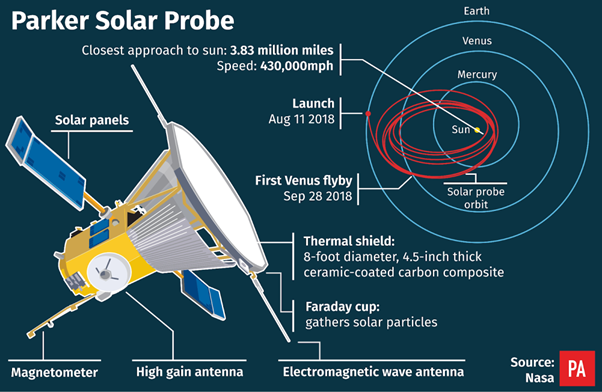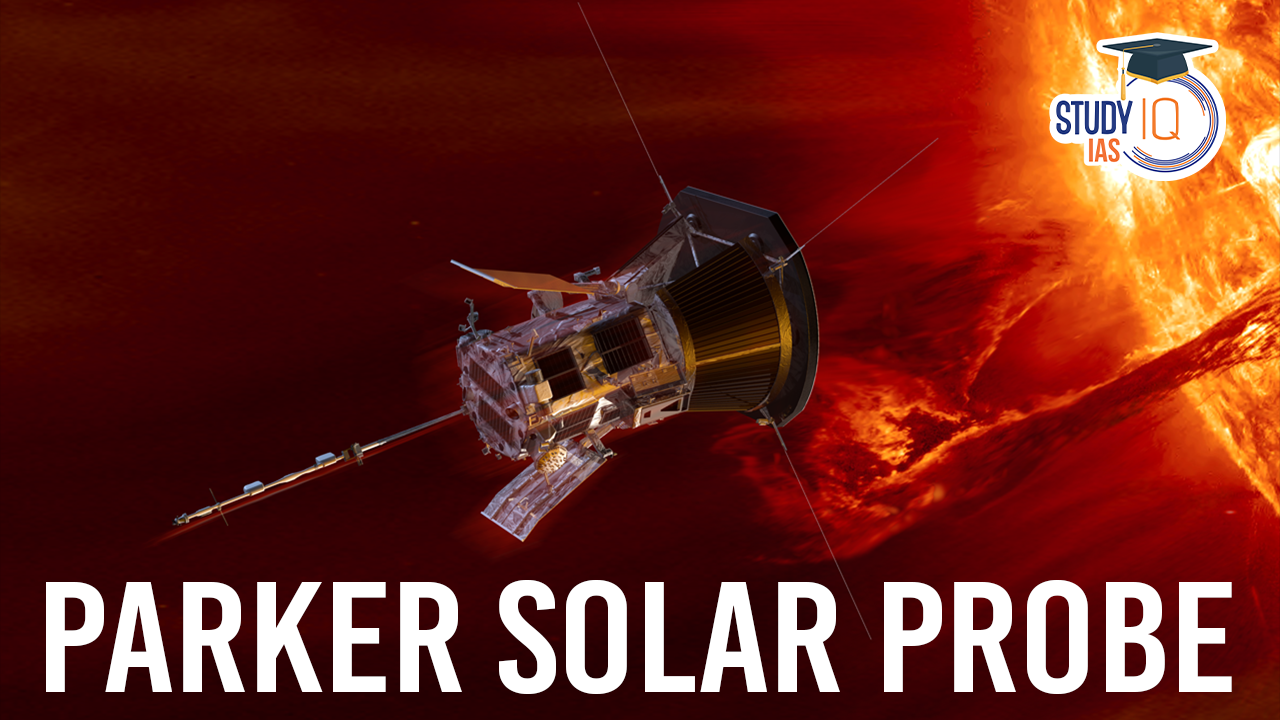Context: NASA’s Parker Solar Probe has just made history by completing its closest pass to the Sun than any spacecraft ever before. On 24 December 2024, the Parker Solar probe made its closest approach to the Sun, coming to a distance of 6.1 million km (0.04 AU) from the surface. NASA’s Parker Solar Probe is making significant strides in solar exploration, it has recently completed its 23rd close approach to the Sun.
About Parker Solar Probe
- Parker Probe is part of NASA’s Living With a Star program.
- Scientific Objectives of the Mission: Uncovering Solar Mysteries
- Corona’s Temperature: Investigating why the Sun’s corona is hotter (1–2 million °C) than its surface (~5,500 °C).
- Solar Wind Origins: Understanding how the continuous flow of charged particles forms and evolves.
- Coronal Mass Ejections (CMEs): Studying the formation of plasma clouds that influence space weather.
- The spacecraft has become the closest ever artificial object to the Sun. It has circled gradually closer to the sun, flying past Venus in order to use the planet’s gravity to move it into a tighter orbit.
Mission Timeline
- Launched: August 12, 2018, aboard a Delta IV Heavy rocket.
- Duration: Seven years, with progressively closer orbits to the Sun.
Key Specifications
- Speed: Up to 6,90,000 km/h (fast enough to travel from New Delhi to Chennai in about 10 seconds).
- Heat Shield: A 4.5-inch-thick carbon-composite shield protects its instruments from temperatures exceeding 1,377°C, keeping them at a stable 29°C. The solar shield is placed on the Sun-facing side of the spacecraft.
- Cooling System: Circulates a gallon of water to absorb and radiate heat.



 Advanced Air Defence Radars: Types, Comp...
Advanced Air Defence Radars: Types, Comp...
 Ion Chromatography, Working and Applicat...
Ion Chromatography, Working and Applicat...
 Broadly Neutralising Antibodies (bNAbs):...
Broadly Neutralising Antibodies (bNAbs):...

























